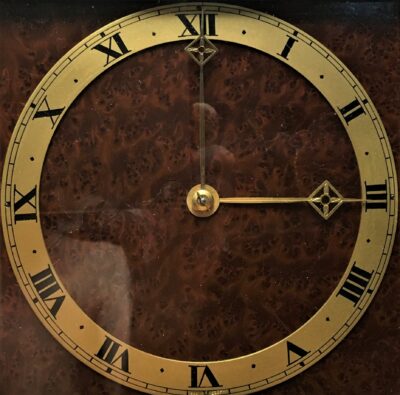
In the second half of the 18th century, the round wall clock appeared in England called the “Dial Clock,” whose diameter was about 12 inches (30 cm). It was like a tavern clock that lost its long part to keep only the round dial. A square case behind the circular dial contained the movement, often a fusee movement, replaced later by a standard mainspring. A wooden frame more or less wide surrounded the dial. These clocks were trendy in public buildings because of their large diameter. The Americans adopted the shape and called them “Office Clocks.” Here is a Seth Thomas Chatham (1909-1910) of large diameter (16 inches), probably from a factory or public building. Note the oak border and the large brass bezel. The same model was available in 12-inch format. It’s a timepiece whose ticking is very audible. A small door below the movement case gives access to the pendulum. Later, especially in America, from the 1845s, Gallery clocks, as they were named, became not only round but square, hexagonal, octagonal, decagonal, or dodecagonal. Large in diameter (30 to 60 cm – 12 to 24 inches), they hung on factories, railway stations, public buildings, schools, city halls, etc. At first, they were timepieces only. Subsequently, they became electric and even synchronized remotely with a mother or master clocks.


